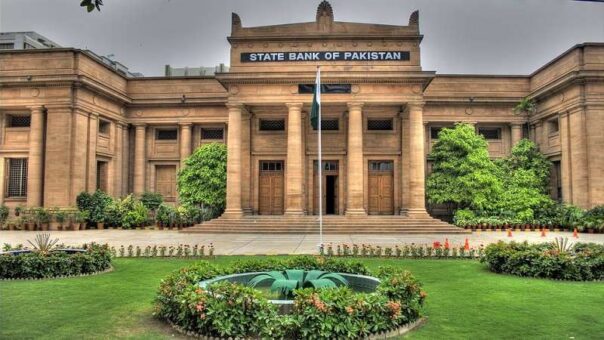The State Bank of Pakistan (SBP) has revealed an ambitious plan for government borrowing from banks, aiming to secure approximately Rs 5 trillion during the last quarter of the fiscal year 2023-24.
This move comes as the government seeks to address its budget deficit by tapping into the financial resources available within the banking sector.
Outlined in the auction calendar released by the SBP, the government intends to borrow Rs 4.965 trillion from banks between April and June 2024. This borrowing will primarily be facilitated through the sale of treasury bills and bonds.
The majority of the borrowing activity during this period is expected to be conducted through fixed and floating-rate Pakistan Investment Bonds (PIBs), with various maturity periods ranging from three to 30 years. The government aims to raise Rs 2.490 trillion through long-term paper auctions, as indicated by the central bank’s auction calendar.
Additionally, the government plans to borrow Rs 2.475 trillion from commercial banks through the auctions of market treasury bills. This significant borrowing activity underscores the pressing need for funds to meet the government’s growing spending requirements.
Pakistan’s public debt has been on an upward trajectory, increasing by 6.51 percent to Rs 64.805 trillion in the first eight months of the fiscal year 2023-24, according to recent figures from the SBP. The surge in federal government debt experienced a 19 percent year-on-year growth in February alone. During the period from July to February of FY2024, the central government’s domestic debt rose by 10 percent to Rs 42.671 trillion, marking a 24.9 percent year-on-year increase in February.
This escalation in public debt is attributed to the government’s expanding financial needs and limited external financing options. With a growing reliance on domestic resources to fund the budget deficit, coupled with rising interest rates, the burden of markup payments, particularly on domestic debt, has intensified.
The prevailing benchmark interest rate set by the SBP stands at 22 percent, reflecting the current monetary policy stance. However, analysts anticipate a shift towards monetary easing in the second quarter of the year. Despite concerns stemming from the recent surge in fuel prices, expectations of a decline in inflation due to a significant high base effect in the coming months have fueled speculations of rate cuts.
As the nation grapples with economic challenges including high interest rates, dwindling revenues for state-owned enterprises, and inadequate tax collection, the government faces increasing difficulties in managing the nation’s debt burden. The upcoming monetary policy review scheduled for April 29 is anticipated to shed further light on potential adjustments to the prevailing interest rates, amid efforts to stabilize the economy and spur growth.
